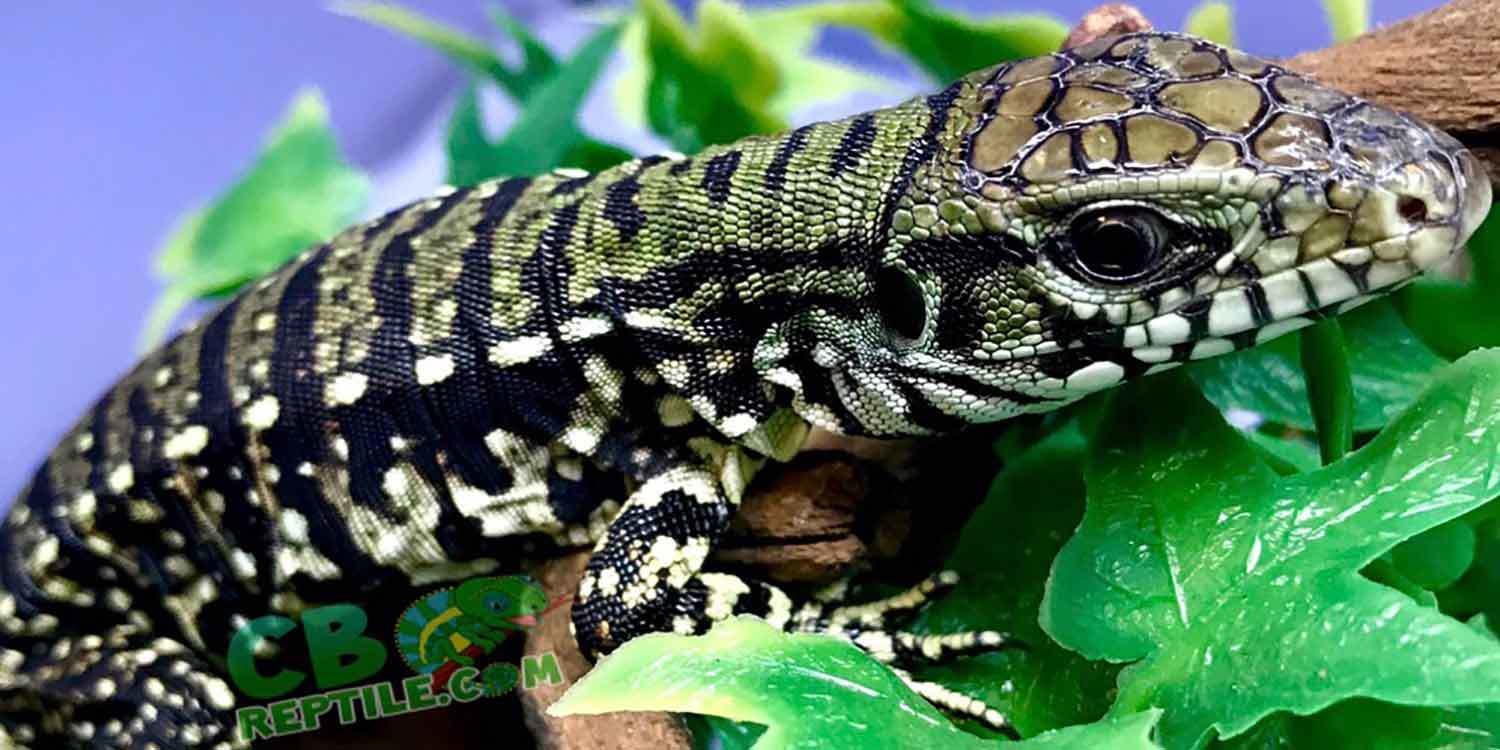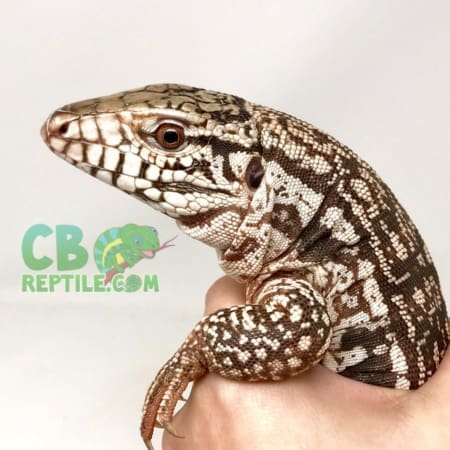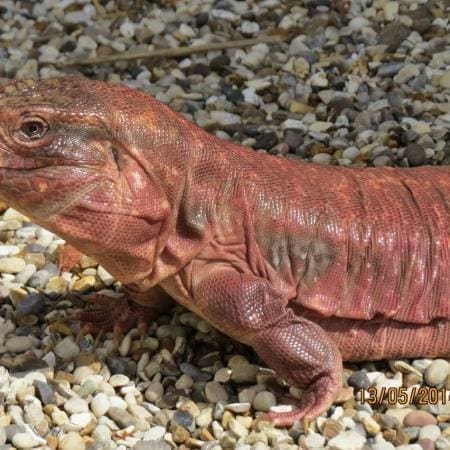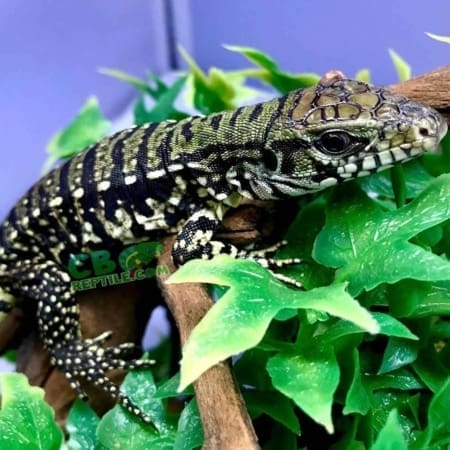Tegus for sale online
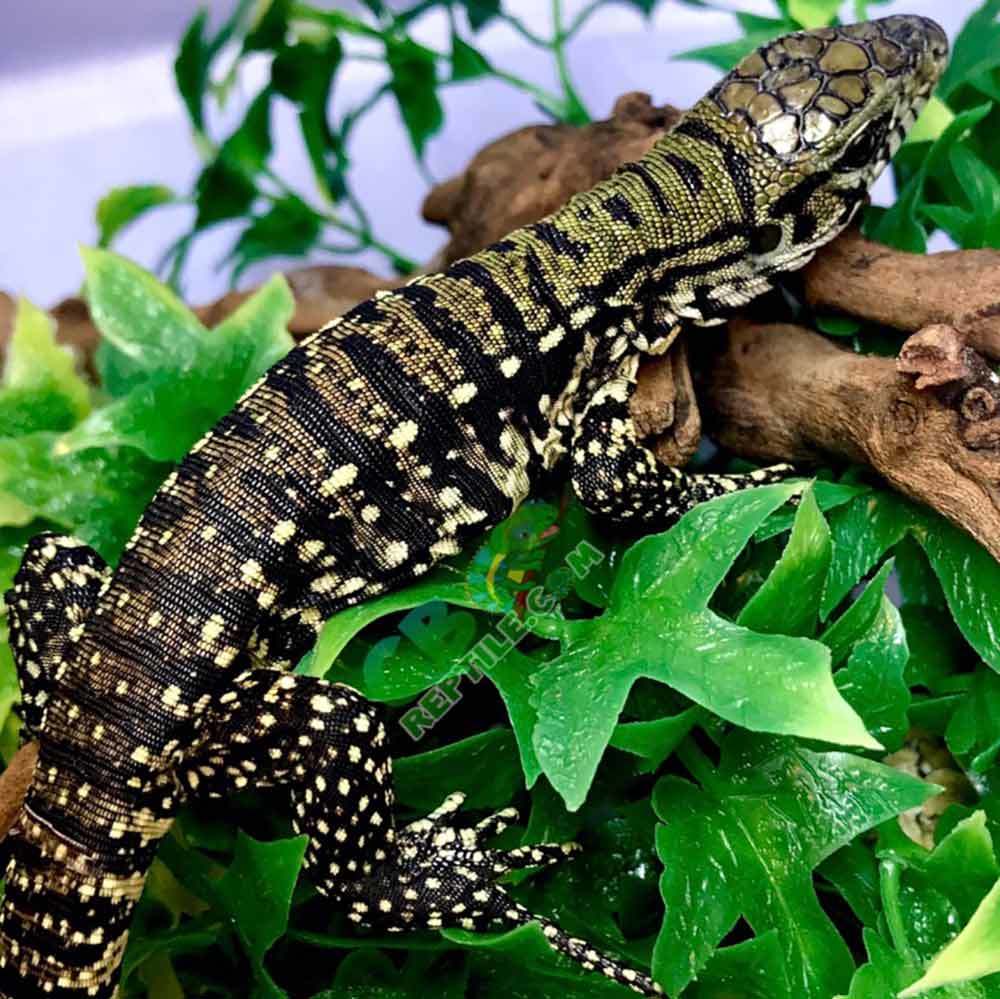
Argentine Tegus for sale
Description: The Argentinian tegu can reach an adult size of 4 feet or even longer (including the tail). They have a fairly distinctive red ground color with white and black dots and stripes over the entire body.
Enclosure: With all the different enclosures available on the market today choosing an enclosure could become quite confusing. We would recommend a simple wooden vivarium with glass sliding front doors. Fitted with a heating system and lighting system as mentioned below they just seem to make the perfect habitat for a pet reptile. They look nice and can be ordered in a colour to match your household furniture. They hold the heat well, are easy to clean and durable. We would not recommend one of the many different glass enclosures on the market today as they are very expensive compared to the wooden equivalent and they do not hold the heat nearly as well. For a fully grown Black and White Tegu they should have a 6ft x 4ft x 3ft enclosure, when these lizards are young they can be kept in a smaller enclosure but they will need upgrading as they grow.
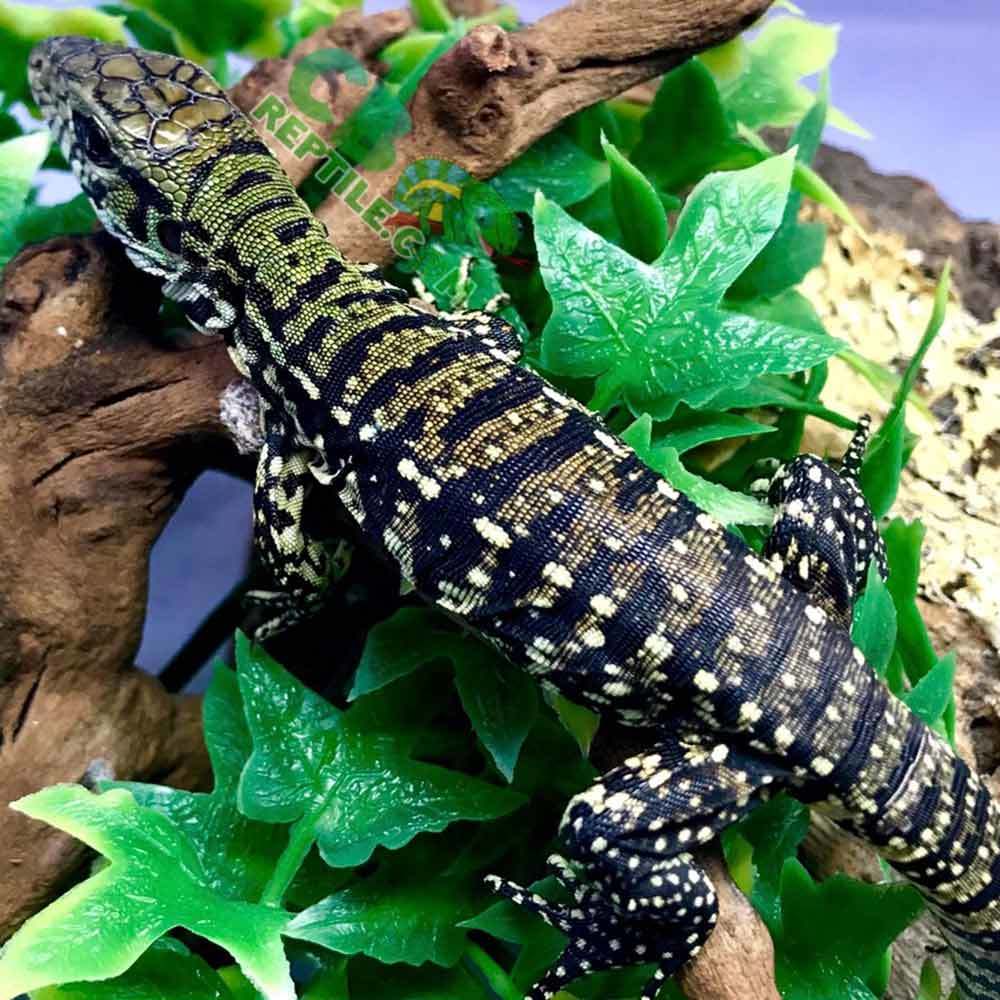
Temperature: Tegus should be maintained at 85 degrees with a basking spot of 100 degrees. You should create a heat gradient by putting your heat source only at one end of the enclosure, this will create a “hot” end and a “cool” end of the enclosure as this will give your animal a choice of temperatures in the enclosure so that he always feels comfortable. We always feel that the safest way is to use a thermostatically controlled heating system. The are many systems on the market today that are perfect for the job in hand. An overhead ceramic element or reptile radiator connected to a temp stat or a pulse stat is one way, or a coloured spot bulb connected to a dimming thermostat is equally as good. Both these systems will provide a very controllable heat source. There are other heaters out on the market such as AHS all in one heaters/thermostat that will also do a great job of heating the enclosure.
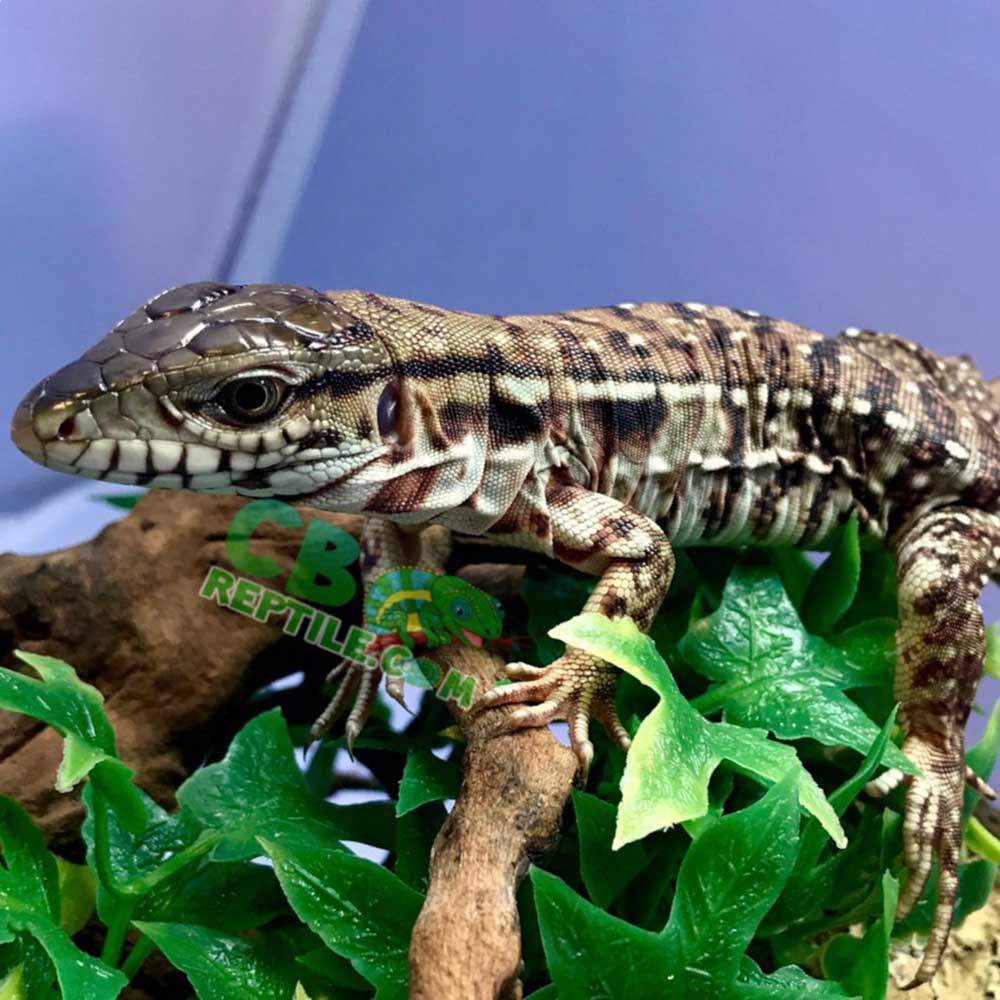
Lighting: Argentinian red tegus are diurnal and need exposure to full spectrum UVA and UVB lighting. 12% Arcadia Florescent Tubes are the best choice in UV lighting for a Tegu.
Humidity: These lizards should have humidity levels of 60-80%. This can be maintained by misting the enclosure twice daily, devices such as waterfalls and foggers can also be used in the enclosure to help maintain the adequate humidity levels required. They also require a large water dish to allow them to soak in the water, this will also help to increase the humidity levels in the enclosure.
Selecting an Argentine tegu for sale: When selecting your new Black and White Tegu it’s important to check that the animal is in good health and is kept in a clean and adequate enclosure. Looking around the shop will give you a good idea of how the animals are kept.. If the shop is kept clean and maintained well, the staff are friendly and helpful and the enclosures are kept clean with bright, alert animals you can be sure the animals are healthy.. The staff should be happy to show you the animal and talk you through the up keep and answer any questions you may have. Be sure to check out the Argentine tegu for sale. Usually, you can find both black and white Argentine tegu and red Argentine tegu for sale
Substrate: Tegus like to burrow, and need a substrate that is absorbent and easy to clean such as, Kritters Crumble, Orchid Bark etc.
Argentine Tegu Temperament: When young these lizards can be very nervous and skittish, but with perseverance and regular handling when they are young they can become very docile animals. As these lizards grow larger they will become more docile.
Argentine Tegu Shedding: These lizards will shed their skin throughout their lives. You will notice that the colors of your Tegu will dull at the start of the shedding process and the skin will start to peel away in pieces. Humidity in the enclosure can be increased prior and during this period to aid this process and you will notice your lizard bathing more frequently.
Handling your baby tegu: Handling a baby tegu for sale is recommended when these lizards are young as they can be quite nervous and skittish, 10-15 minute periods of handling is adequate to get them used to human contact. These lizards rarely bite but they may squirm in your hands trying to break loose. If handled regularly when young these lizards can become very docile and make fantastic pets.
Argentine Tegu Diet: Tegus are typically considered omnivores, although many captive diets do not reflect this tendency. In addition to an assortment of appropriately sized insects (crickets, mealworms, waxworms, roaches), various high calcium fruits and vegetables should be regularly offered. Willingness to accept fruits will vary from animal to animal, but even a small amount can add a lot of variety and essential nutrients to the tegu diet. Rodents may be offered, though sparingly, as they tend to be high in fat, and tegus are simply not designed to digest large quantities of fur. Instead, a balanced dietary supplement can be created using raw, ground turkey, whole eggs (with shell), and bone meal or an equivalent calcium/vitamin supplement. Tegus grow quickly and have very active metabolisms. As such, regular feeding is necessary. There is no rule of thumb as to exactly how much to offer, but tegus should have a filled-out appearance when they are full. Start by offering young tegus food daily and adjust quantity and frequency as needed. Calcium and vitamin supplementation is especially important for young tegus. A high quality calcium supplement complete with vitamin D3 should be lightly dusted on all food every other feed.
Water for your baby Tegu: Fresh water should be provided daily.
Maintenance: The enclosure should be spot cleaned every day. Simply pick up any unwanted debris or feaces this will help prevent any bacteria build up in the enclosure. Every 4 – 6 weeks we would recommend that the enclosure is completely stripped out. Once you have removed your animal to a safe alternative warm temporary home, remove all furnishings and substrate, disinfect the enclosure totally making sure you get into all the corners. Disinfect all furnishing and rinse, replace substrate with new and then replace everything back into the enclosure and heat back to correct temperature before replacing your animal.
Sexing: Sexing Red Tegu’s is a very hard thing to do. Males do get bigger than the females. Males develop large jowls underneath the chin as they mature.
Breeding: To successfully breed RedTegu’s you must hibernate both the Male and the Female through the winter season. I would say that the clutches can be anywhere between 10 to 70 eggs! Once she lays the eggs, they should be removed for incubation. Be careful not to rotate the eggs as they are removed. Place them in an incubator, with a temperature of 86 to 90 degrees. Now the waiting begins. Keep monitoring the temperature and humidity. also, check the eggs very gently by touch, to make sure they have a leathery feel, not too hard nor too soft. I would recommend spending extra money on a quality thermostat. The eggs will incubate between 45 and 60 days before hatching. Provide Vermiculite as a substrate for the eggs in the incubator.

